Names Explorer 77MIDEX-0 SATCAT no. 25791 Inclination 24.9836° Period 1.7 hours | COSPAR ID 1999-035A Launch date 24 June 1999 Inclination 24.9836° | |
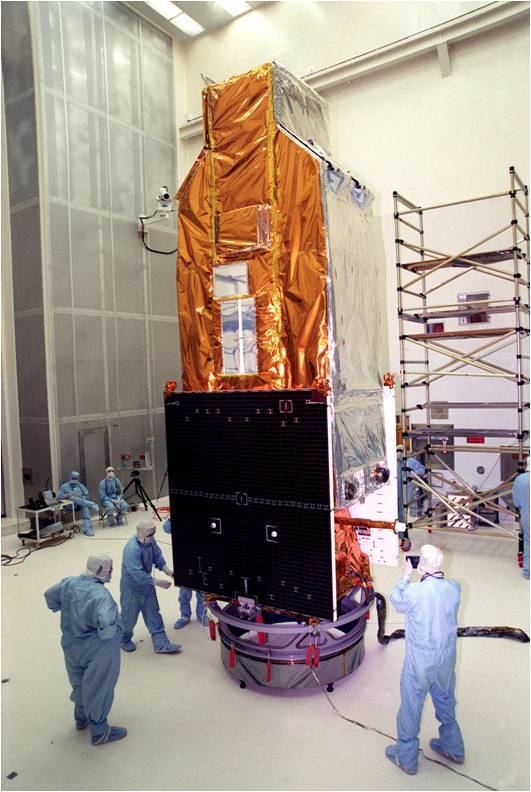 | ||
Launch site Cape Canaveral Air Force Station Space Launch Complex 17 Similar International Ultraviolet Explorer, Extreme Ultraviolet Explorer, Wide Field Infrared Explorer, Uhuru, Small Astronomy Satellite 2 | ||
The Far Ultraviolet Spectroscopic Explorer (FUSE) is a space-based telescope operated by the Johns Hopkins University Applied Physics Laboratory. FUSE was launched on a Delta II rocket on 24 June 1999, as a part of NASA's Origins program. FUSE detected light in the far ultraviolet portion of the electromagnetic spectrum, between 90.5-119.5 nanometres, which is mostly unobservable by other telescopes. Its primary mission was to characterize universal deuterium in an effort to learn about the stellar processing times of deuterium left over from the Big Bang. FUSE resides in a low Earth orbit, approximately 760 km (410 nmi) in altitude, with an inclination of 25 degrees and just less than a 100-minute orbital period. Its Explorer designation is Explorer 77.
Contents
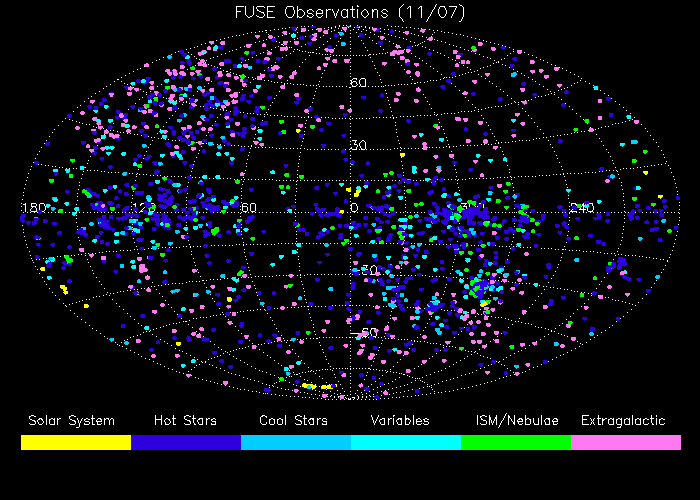
On 12 July 2007, FUSE's final reaction wheel, which is required for accurately pointing a spacecraft, failed and efforts to restart it were unsuccessful. An announcement was made on 6 September that because the fine control needed to perform its mission had been lost, the FUSE mission would be terminated.
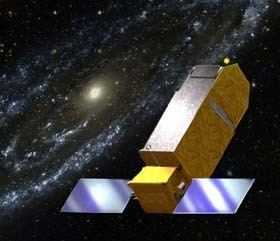
Optical design

Although the original specification was to have a Wolter-type grazing incidence telescope, the final design of the FUSE telescope comprises four individual mirrors. Each of the four mirrors is a 39-by-35 cm (15.4-by-13.8 in) off-axis parabola. Two mirror segments are coated with silicon carbide for reflectivity at the shortest ultraviolet wavelengths, and two mirror segments are coated with lithium fluoride over aluminum that reflects better at longer wavelengths. This optimizes performance over the entire spectral range.
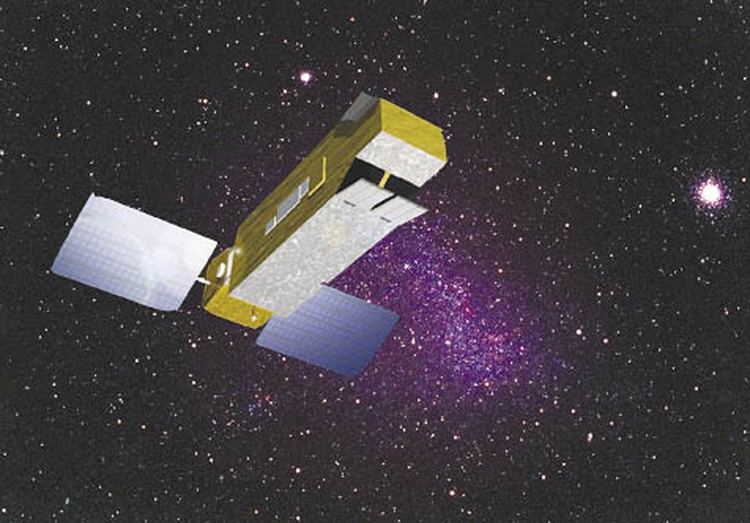
Each mirror has a corresponding astigmatism-corrected, holographically-ruled diffraction grating, each one on a curved substrate so as to produce four 1.65 m (5.4 ft) Rowland circle spectrographs. The dispersed ultraviolet light is detected by two microchannel plate intensified double delay-line detectors, whose surfaces are curved to match the curvature of the focal plane.
Science results
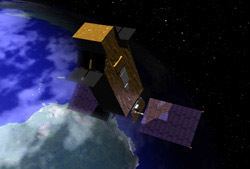
Over 400 scientific papers have been written using data from FUSE, with subjects ranging from cool stars to the intergalactic medium. One of the primary science goals of FUSE was to study the abundance of deuterium, an isotope of hydrogen. Because of the large number of atomic absorption and emission lines in the far-ultraviolet, FUSE enabled many studies of galactic, extragalactic and intergalactic chemistry and chemical evolution.
Impacts
Canada credits work on the FUSE as helping them prepare for making the fine guidance sensors instrument on the James Webb Space Telescope. Canada's contribution is called FGS/NIRISS and is a combined Fine Guidance Sensor, spectrograph, and camera.
